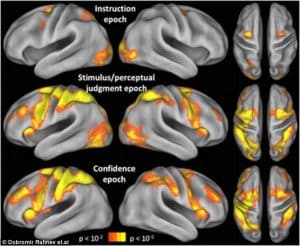The Busy Brain : Researchers find our Brain may sometimes ‘Switch Off’ our vision
We spend ten minutes every day rummaging for lost items, from books and phones to car keys and even car themselves, a survey has found. An unfortunate fourteen people said they spend over an hour every day looking for things they have misplaced.
Researchers have now found that if the frontal cortex of the Brain doesn’t expect to see the object while transforming information into sight, it will blot it from consciousness.
“If the frontal cortex isn’t expecting to see a missing sock or your keys in the available visual stimuli, although they might be in plain sight, it will not include it in the entire process of transforming information into vision” said Dobromir Rahnev, a psychologist at the Georgia Institute of Technology.
There are three basic stages of visual perception: selection, combination and evaluation. Selection is the stage when the brain picks out part of the vast array of available visual stimuli to actually pay attention to. The second stage is combination, where the brain merges the visual information it processed with other material. Finally the brain evaluates all of the information to make a decision
on what it sees.During the study, researchers investigated which regions in the brain (focused in the frontal cortex) lit up while participants completed visual tasks corresponding to the stages viz., selection, combination and evaluation.
The second part of the study involved using magnetic stimulation to inhibit those regions to see which is involved in what stage. Selection is performed as the brain selects part of the available visual stimuli to focus on.
The second state, combination merges it with other information before the final step of evaluation.
“The frontal cortex sends a signal to move your attention onto the object you select,” Rahnev said.
“It does some of the combining with other information, and then it’s probably the primary evaluator of what you think you saw.”
During the experiments, the team witnessed different areas of the frontal cortex light up: the back during selection, midsection during combination and the front became active once evaluation began.
Following these results the team created a kind of vision map of the frontal cortex.
When researchers used the magnetic stimulation to inhibit these areas, they found the participants became less able to complete the corresponding functions of selection and combination.
But the opposite happened when the front was stimulation, as the accuracy of what participants saw increased significantly.
“This is a really clear demonstration of the role that the frontal cortex, which is usually seen as the seat of thought, plays in controlling vision.” Rahnev also blames being distracted when missing details, as it overloads the organization of perceptions.































